Tel Aviv Under Fire, Then and Now: The Forgotten Footnotes of History
There are moments in history that seem destined to be forgotten, buried beneath decades of noise, wars, and shifting narratives.
There are moments in history that seem destined to be forgotten, buried beneath decades of noise, wars, and shifting narratives. And yet, in moments like these — as Iranian missiles rain down on Israeli cities — those forgotten moments whisper back to us, reminding us that history often repeats itself, not as grand chapters, but as neglected footnotes.
As I write this, Tel Aviv is once again under attack. This time, it’s not Mussolini’s Italy but the Islamic Republic of Iran. Since last night, hundreds of ballistic missiles launched from Iranian territory are targeting Israeli cities, a direct escalation of Iran’s long war-by-proxy with the Jewish state.
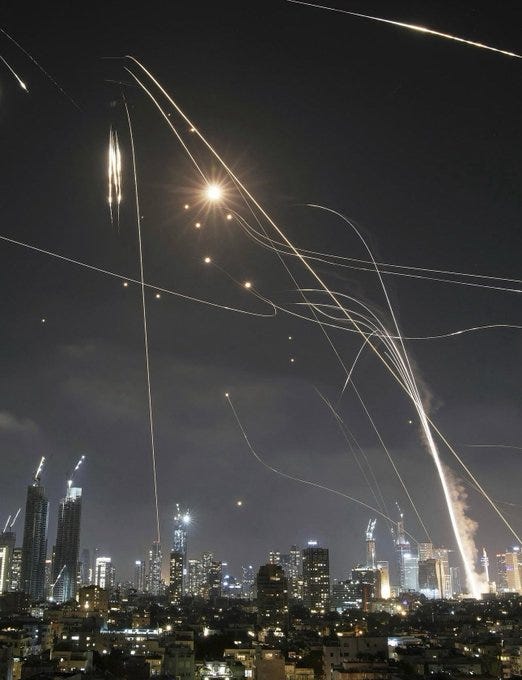
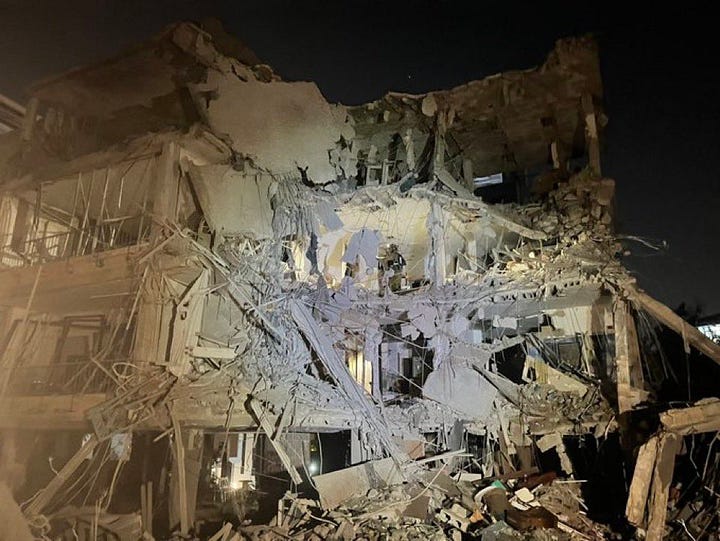
While most of the missiles were intercepted, and while Israel’s air defenses are among the best in the world, we are witnessing what is now the most destructive direct attack on the city since September 9, 1940, when Italian bombers, flying under Mussolini’s fascist banner, struck the heart of Tel Aviv.
On that afternoon, 84 years ago, a squadron of Italian bombers flew in from their Mediterranean bases on Rhodes and Leros. Their target: not a military installation, not a British garrison, but the heart of what was then known as the “first Hebrew city.” Tel Aviv. By the end of that day, 137 civilians were dead — men, women, and children — crushed beneath the rubble of wooden shacks and shattered buildings.
For the Jewish community in British Mandate Palestine, it was a horrific introduction to global war. The British, focused elsewhere, could barely mount a defense. There were no Iron Domes. No sirens giving advanced warnings. Survivors later recalled sitting in cinemas, watching Mickey Mouse cartoons, before the bombs started to fall.
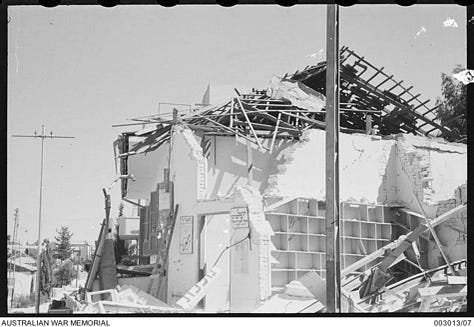
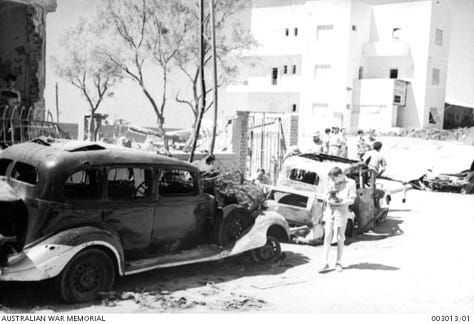
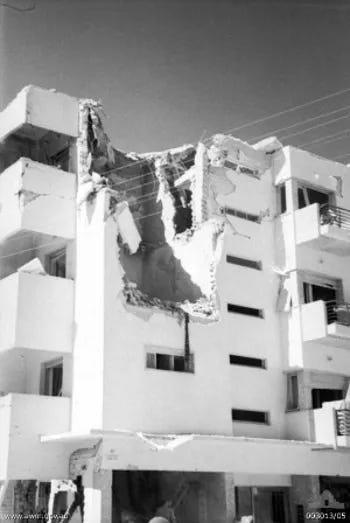
Most people don’t know that Tel Aviv was once bombed by Fascist Italy. The small memorial to that attack sits quietly on King George Street, a modest stone marker amid the cafes, traffic, and modern life of Tel Aviv. But why bring this up now? Because history’s footnotes tend to become relevant when we least expect them. Back then, the bombs were dropped by a European fascist regime fighting a global war. Today, they come from a theocratic regime driven by genocidal ideology. Different flags. Same hatred.
Of course, Last night was not the first time Tel Aviv has been attacked in its modern history. Iran has targeted Israel directly twice before with hundreds of ballistic missiles and drones. Yemen’s Houthis — armed and trained by Iran — have managed to fly drones into Tel Aviv buildings and send ballistic missiles to Israeli cities. Israelis are used to Hamas, Islamic Jihad and Hezbollah rockets — not to mention decades of Palestinian suicide bombers and terrorism bringing carnage to cafes, buses, and markets. But this time is different. This time the threat is existential and why Israel had to act. The threat is a nuclear Iran.
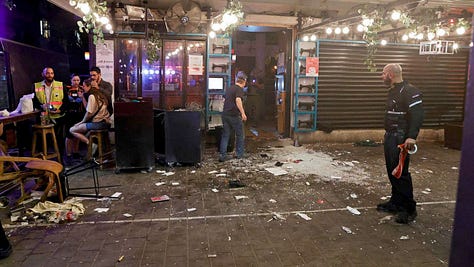

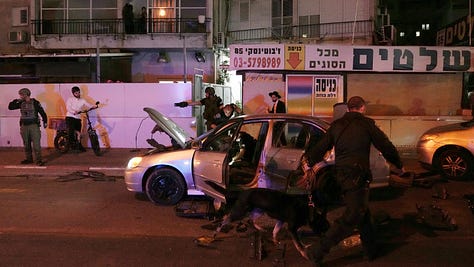
In 1940, the day after the bombing, Tel Aviv’s cafes reopened. People gathered for conferences and public events. Life, stubborn and unbowed, resumed. Last night, after the missiles fell and the interceptions were counted, Tel Aviv’s streets were filled again — not just with fear, but with determination. And, as always, there is a lesson here, hidden beneath the rubble and the footnotes of forgotten history:
Israel and the Jewish people have always stood at the crossroads of empires, ideologies, and wars. And yet, it has endured.
Iran may hope for terror, for panic, for paralysis. Instead, every attack reminds Israelis and Jews of who they are, and of how often they’ve stood alone before — and survived.
The Italian bombing of Tel Aviv is now a neglected page in the global history of World War II. But it wasn’t just an attack on a city — it was an attack on an idea. Just like now.
But like every empire, ideology, or movement that tried to crush that idea before — they’ll fail. Tel Aviv was built on resilience. Israel was rebuilt on survival. And the proof is in the pudding. IDF soldier plants an Israeli flag in a destroyed building the morning after Iran’s attack.
The footnotes of history may be easy to forget, but they have a way of writing themselves back into the present. The enemies change. The story doesn’t.
Let the footnotes speak. Let the forgotten chapters echo. We’ve seen this movie before.
And we know how it ends.
Am Yisrael Chai







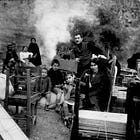
So sad the nazi attack failed now they're crying that the victims retaliated.